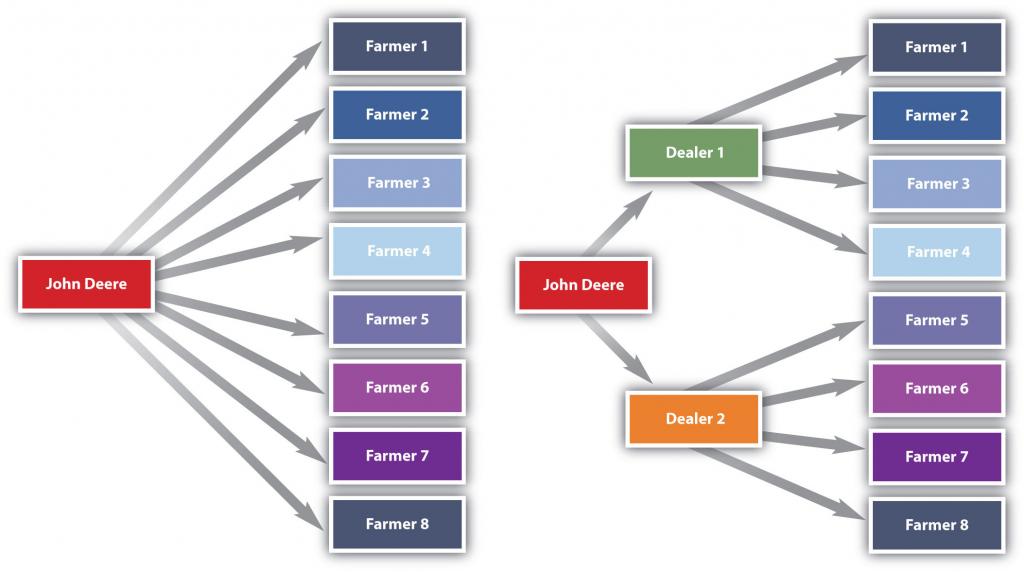8.1: Marketing Channels and Channel Partners
- Page ID
- 5008
Learning Objectives
- Explain why marketing channel decisions can result in the success or failure of products.
- Understand how supply chains differ from marketing channels.
- Describe the different types of organizations that work together as channel partners and what each does.
Today, marketing channel decisions are as important as the decisions companies make about the features and prices of products (Littleson, 2007). Consumers have become more demanding. They are used to getting what they want. If you can’t get your product to them when, where, and how they want it, they will simply buy a competing product. In other words, how companies sell has become as important as what they sell1.
The firms a company partners with to actively promote and sell a product as it travels through its marketing channel to users are referred to by the firm as its channel members (or partners). Companies strive to choose not only the best marketing channels but also the best channel partners. A strong channel partner like Walmart can promote and sell the heck out of a product that might not otherwise turn a profit for its producer. In turn, Walmart wants to work with strong channel partners it can depend on to continuously provide it with great products that fly off the shelves. By contrast, a weak channel partner can be a liability.
The simplest marketing channel consists of just two parties—a producer and a consumer. Your haircut is a good example. When you get a haircut, it travels straight from your hairdresser to you. No one else owns, handles, or remarkets the haircut to you before you get it. However, many other products and services pass through multiple organizations before they get to you. These organizations are called intermediaries (or middlemen or resellers).
Companies partner with intermediaries not because they necessarily want to (ideally they could sell their products straight to users) but because the intermediaries can help them sell the products better than they could working alone. In other words, they have some sort of capabilities the producer needs: contact with many customers or the right customers, marketing expertise, shipping and handling capabilities, and the ability to lend the producer credit are among the types of help a firm can get by utilizing a channel partner. There are four forms of utility, or value, that channels offer. These are time, form, place, and ownership.
Intermediaries also create efficiencies by streamlining the number of transactions an organization must make, each of which takes time and costs money to conduct. As Figure 8.1 “Using Intermediaries to Streamline the Number of Transactions” shows, by selling the tractors it makes through local farm machinery dealers, the farm machinery manufacturer John Deere can streamline the number of transactions it makes from eight to just two.
Figure 8.1 Using Intermediaries to Streamline the Number of Transactions

The marketing environment is always changing, so what was a great channel or channel partner yesterday might not be a great channel partner today. Changes in technology, production techniques, and your customer’s needs mean you have to continually reevaluate your marketing channels and the channel partners you ally yourself with. Moreover, when you create a new product, you can’t assume the channels that were used in the past are the best ones (Lancaster & Withey, 2007). A different channel or channel partner might be better.
Consider Microsoft’s digital encyclopedia, Encarta, which was first sold on CD and via online subscription in the early 1990s. Encarta nearly destroyed Encyclopedia Britannica, a firm that had dominated the print encyclopedia business for literally centuries. Ironically, Microsoft had actually tried to partner with Encyclopedia Britannica to use its encyclopedia information to make Encarta but was turned down.
Figure 8.2

Neither Encyclopedia Britannica nor Microsoft saw Wikipedia on the horizon.
Rishabh Mishra – Encyclopedias – CC BY 2.0.

